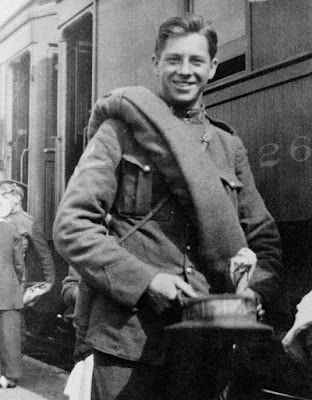Another Unknown Soldier of the Great War identified.
Another Unknown Soldier of the Great War identified.
On 10 May, Corporal Frederick ‘Percy’ Bousfield was confirmed as the Canadian soldier buried in a previously unknown grave in Ypres, Belgium.
Bousfield, who died in June 1916, had been commemorated on the Menin Gate Memorial along with 55,000 other empire troops who had no known grave in the Ypres Salient.
Thanks to remarkable archival work, Bousfield’s grave could be conclusively confirmed.
Yet what is most remarkable about this story, is how often remains are still discovered on the Western Front, with the Commonwealth War Graves Commission alerted almost daily to these finds.
Why is this the case?
Back in September 1921, the secretary of state for war, Laming Worthington-Evans, officially ended the search for the Western Front’s missing, citing that the battlefields had been searched at least six times. Yet British exhumation parties were still discovering 600 bodies per week.
Worthington-Evans’ declaration gave the impression that some turning point had been reached. It had not. The withdrawal of exhumation parties was more a response to diminishing manpower, problems on the ground, and lack of finance. The task passed onto the Imperial War Graves Commission, despite their primary objective being the construction of an estimated 3,000 cemeteries.
The commission had no plausible systems for managing the chance discovery of any of the estimated 94,000 empire bodies that remained on the battlefields. It subsequently pieced together plans to reward farmers and construction workers two francs for uncovered bodies.
The most damning evidence that the exhumation parties were prematurely disbanded was that from August 1921 until 1939 the commission’s working parties discovered another 38,000 empire bodies.
Undoubtedly, the search for missing soldiers couldn’t continue forever; yet surely their families deserved a greater effort to help them achieve that all-important human need for emotional closure.
Excerpt from: The Nameless Names: recovering the missing ANZACs
Photograph credit: Commonwealth War Graves Commission
‘Follow/like' my page for more stories like this or subscribe to posts on Scottbennettwriter.com











Comments
Post a Comment